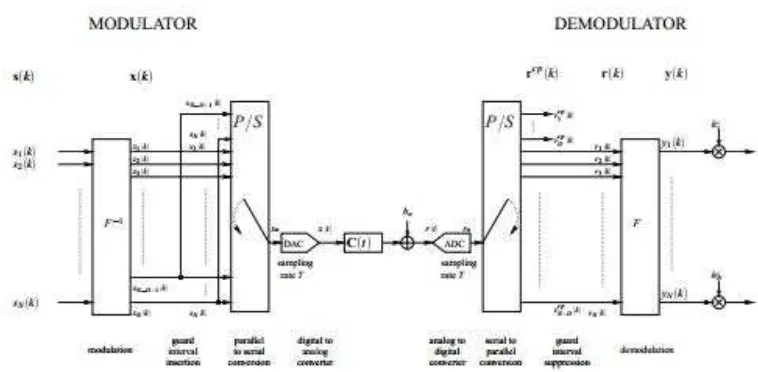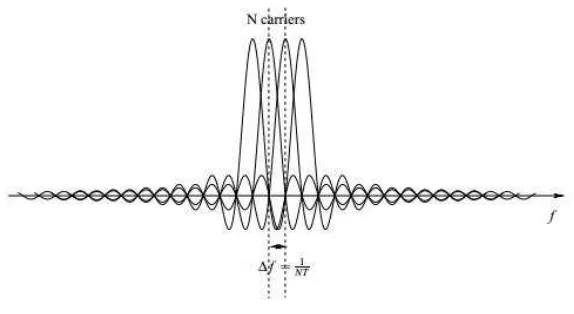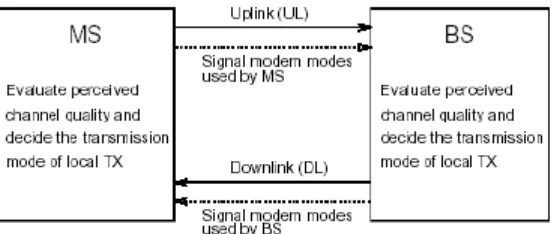ADAPTIVE OFDM WIRELESS COMMUNICATION DEVELOPMENT FOR WIRELESS MEDICAL IMAGE TRANSMISSION IN DIFFERENT
RESOLUTION
MUHAMMAD WAFI BIN MOHAMAD YUSAK
This Report is Submitted in Partial Fulfillme nt of Require ment for Award of Bachelor of Electronic Engineering (Wireless Communication) With Honours
Faculty of Electronic and Computer Engineering Universiti Teknikal Malaysia Melaka
UNIVERSTI TEKNIKAL MALAYSIA MELAKA
FAKULTI KEJURUTERAAN ELEKTRONIK DAN KEJURUTERAAN KOMPUTER BORANG PENGESAHAN STATUS LAPORAN
PROJEK SARJANA MUDA II
Tajuk Projek :
ADAPTIVE OFDM WIRELESS CO MMUNICATION DEV ELOPMENT FOR WIRELESS MEDICAL IMAGE TRANSMISSION IN DIFFERENT RESOL UTION.
Sesi Pengajian : 1 4 / 1 5
Saya, MUHAMMAD WAFI B IN MOHAMAD YUS AK
mengaku membenarkan Laporan Projek Sarjana Muda ini disimpan di Perpustakaan dengan syarat-syarat kegunaan seperti berikut:
1. Laporan adalah hak milik Universiti Teknikal Malaysia Melaka.
2. Perpustakaan dibenarkan membuat salinan untuk tujuan pengajian sahaja.
3. Perpustakaan dibenarkan membuat salinan laporan ini sebagai bahan pertukaran antara institusi
pengajian tinggi.
4. Sila tandakan ( √ ) :
SULIT*
*(Mengandungi makluma t yang berda rjah keselamatan a tau kepentingan Malaysia seperti ya ng termaktub di dalam AKTA RAHSIA RASMI 1972)
TERHAD** **(Mengandungi ma kluma t terhad ya ng telah di tentukan oleh
organisasi/badan di mana penyelidikan dijalankan)
TIDAK TERHAD
Disahkan oleh:
__________________________ ___________________________________ (TANDATANGAN PENULIS) (COP DAN TANDATANGAN PENYELIA)
iii
“I hereby declare that this report is the result of my own work except for quotes as cited in the references”
Signature :
Author : Muhammad Wafi Bin Mohamad Yusak
iv
“I hereby declare that I have read this paper and in my opinion this report is sufficient in terms of scope and quality for the award of Bachelor of Electronic
Engineering (Wireless Communication) With Honours”
Signature :
Supervisor’s Name : Dr. Mohammed Saeed Jawad
v
ACKNOWLEDGEMENT
Alhamdulillah, Praise to Allah S.W.T for giving me the strength, guidance and chance in completing this thesis for my Final Year Projectas part of the requirement for award of Bachelor of Electronic Engineering (Wireless Communication) With Honours. First of all, I owe my deepest gratitude to my supervisor, Dr. Mohammed Saeed Jawad for his support, guidance, advice and willingness to help me in completing the Final Year Project. I am very honoured to have him as my supervisor. I am also pleased to thank everyone who supported me either direct or indirect in giving me ideas and share their opinion.
I would like to take this opportunity to thanks my family especially my parent Mohamad Yusak Bin Ikhsan and Rohana Binti Osman for their love, patient, morale support and prayer along my study at Universiti teknikal Malaysia Melaka (UTeM). Their fully support has given me strength and inspiration in pursuing my ambition in life as well as to complete this project.
vi
ABSTRACT
vii
ABSTRAK
Kebelakangan ini, dunia tertumpu kepada penggunaan Orthogonal Frequency
Division Multiplexing (OFDM) sebagai satu teknologi baru di dalam komunikasi
viii
CONTENTS
CHAPTER CONTENTS PAGE
Title of Project i
Status Report Form ii
Student Declaration iii
Supervisor Declaration iv
Acknowledge ment v
Abstract vi
Abstrak vii
Table of Content viii
List of Tables xii
List of Figures xiii
List of Abbreviations xv
List of Appendixes xvii
I Introduction 1
1.1 Introduction to Adaptive Orthogonal Frequency Division Multiplexing
1
1.2 Proble m State ment 8
1.3 Project Objectives 9
1.4 Scope of Project 9
1.5 Project Outline 10
ix
II Lite rature Review 11
2.1 Simulation of WiMax System Based on OFDM Model with Difference Adaptive Modulation Techniques
12
2.2 Effect of Modulation Sche mes on Performance of OFDM based Wireless Network using Smart Antenna
14
2.3 Adaptive OFDM for Wireless Interconnect in Confined Enclosures (Computer Chassis)
17
2.4 Adaptive OFDM for Underwater Acoustic Channels with Limited Feedback
20
2.5 Wireless Image Transmission based on Adaptive OFDM System
22
2.6 Summary of Lite rature Review 28
III Project Methodology 32
3.1 Project Overvie w 32
3.2 Software Development 33
3.3 Flow Chart of the Project 34
3.4 Program Planning 35
IV Results and Discussion 37
4.1 Introduction 37
4.2 Final Results and Analysis 38
4.2.1 Input and Output Image 38 4.2.2 BER Comparison for Different IFFT Size 45
4.2.3 Transmitte r Plots 47
x
V Conclusion and Suggestions 50
5.1 Conclusion 50
5.2 Suggestions 51
xi
LIST OF TABLES
TABLE NO TITLE PAGE
2.3 SNR decision level 18
2.5.1 Simulation parameters 26
2.5.2 Threshold SNR (dB) 26
2.6.1 Comparison between literature review 31
4.2.1 Parameters of simulation 38
4.2.2.1 BER values for IFFT = 128 45
4.2.2.2 BER values for IFFT = 256 45
4.2.2.3 BER values for IFFT = 512 46
4.2.2.4 BER values for IFFT = 1024 46
xii
LIST OF FIGURES
FIGURE NO TITLE PAGE
1.1.1 OFDM model 4
1.1.2 Time representation of OFDM 5
1.1.3 Frequency representation of OFDM 5
1.1.4 Signalling scenarios in adaptive modems 8 2.1.1 WiMax physical and MAC layer architecture 12
2.1.2 Specification of WiMax system 13
2.1.3 BER vs SNR for basic OFDM model 14
2.1.4 Probability of error 14
2.2.1 Transmitte r module 16
2.3.1 Measure ment setup 17
2.3.2 Spectral efficiency of an adaptive OFDM system with bandwidth 528 MHz as a function of center frequency
19
2.3.3 Spectral efficiency of adaptive OFDM for various total OFDM symbol bandwidths
19
2.5.1 The proposed image trans mission system 24 2.5.2 Partitioned image and quad-tree representation 24 2.5.3 Block diagram for multipath fading channel 25 2.5.4 BER of adaptive modulation and fixed modulation
according to SNR
27
2.5.5 The comparison of PSNR performance between adaptive modulation and fixed modulation
xiii
3.3 Flowchart of the project 34
4.2.1.1 Original input image 38
4.2.1.2 Received images using BPSK 40
4.2.1.3 Received images using QPSK 41
4.2.1.4 Received images using 16-PSK 42
4.2.1.5 Received images using 256-PSK 43
4.2.3.1 OFDM trans mitter plots 47
xiv
LIST OF ABBREVIATIONS
OFDM - ORTHOGONAL FREQUENCY DIVISION
MULTIPLEXING
LTE - LONG-TERM EVOLUTION
DVB - DIGITAL VIDEO BROADCASTING
FFT - FAST FOURIER TRANSFORM
PSK - PHASE-SHIFT KEYING
IFFT - INVERSE FAST FOURIER TRANSFORM
FIR - FINITE IMPULSE RESPONSE
ADC - ANALOG TO DIGITAL CONVERSION
BER - BIT ERROR RATE
SNR - SIGNAL-TO-NOISE RATIO
CT - COMPUTED TOMOGRAPHY
QAM - QUADRATURE AMPLITUDE MODULATION
AWGN - ADDICTIVE WHITE GAUSSIAN NOISE
WIMAX - WORLWIDE INTEROPERABILITY FOR
MICROWAVE ACCESS
WIFI - WIRELESS FIDELITY
xv
QPSK - QUADRATURE PHASE SHIFT KEYING
BPSK - BINARY PHASE SHIFT KEYING
WMAN - WIRELESS METROPOLITAN AREA NETWORK
PRBS - PSEUDO RANDOM BINARY SEQUENCE
DAB - DIGITAL AUDIO BROADCASTING
DWT - DISCRETE WAVELET TRANSFORM
EZW - EMBEDDED ZEROTREES OF WAVELET
xvi
LIST OF APPENDIXES
NO TITLE PAGE
A Screen log from MATLAB simulation 55
B Input and output image 56
1
CHAPTER I
INTRODUCTION
This chapter discussed about project background, objectives and scope of project, problem statement, system operation and organization of thesis.
1.1 Introduction to Adaptive Orthogonal Frequency Division Multiplexing
2
communications [11]. The OFDM is a particular form of multi-carrier transmission and is suited for frequency selective channels and high data rates. This technique transform a frequency-selective wide-band channel into a group of non-selective narrowband channels, which makes it robust against large delay spreads by preserving orthogonality in the frequency domain [19]. Moreover, the ingenious introduction of cyclic redundancy at the transmitter reduces the complexity to only FFT processing and one tap scalar equalization at the receiver.
Orthogonal frequency division multiplexing (OFDM) is a method of encoding digital data on a multiple carrier frequencies. It is a scheme used as a digital multi-carrier modulation method [18]. OFDM takes several low data rate frequency channels and then combined them into one high data rate frequency channel. This multiplexing system is developed into wideband digital communication used for both wireless and copper wires communication. The data from the OFDM are modulated into time signal. The system can be generated using Q-PSK, 16-PSK, 256-PSK, B-PSK etc. The symbols are divided into frames to modulate the data frame by frame during the OFDM data modulation [18].
3
Where n and m are two unequal integers, f is fundamental frequency and t is the time period.
OFDM can easily adapt to severe channel conditions without complex time-domain equalization [20]. It also robust against narrow-band co-channel interference. OFDM also have low sensitivity to time synchronization errors and have a high spectral efficiency as compared to other double sideband modulation schemes, spread spectrum, etc [20].
The history of multi-carrier modulation began more than 30 years ago. In the beginning, only analog design based on the use of orthogonal waveforms was proposed [18]. Only recently has it been finding its way into commercial use, as the recent developments in technology have lowered the cost of the signal processing that is needed to implement OFDM system. In the frequency selective channels, we have the low-pass received signal as:
Frequency selectivity occurs whenever the transmitted signal ( ) occupies
an interval bandwidth[−�
2 , �
2] greater than the coherence bandwidth ℎ of the channel ( ) defined as the inverse of the delay . In this case, frequency
components of ( ) with frequency separation exceeding ℎ are subject to
different gains. One of the main concerns in transmission schemes is to retrieve ( )
4
extracting ( ) is mostly due to the frequency selectivity behaviour of the channel.
The main idea of OFDM transmission is to turn the channel convolutional effect of the equation into a multiplicative one in order to simplify the equalization task [19]. To this end, OFDM schemes add redundancy known as cyclic prefix in a clever manner in order to circularize the channel effect. Based on the fact that circular convolution can be diagonalized in an FFT basis, the multipath time domain channel is transformed into a set of parallel frequency flat fading channels. Moreover, OFDM system take benefit from the low cost implementation structure of digital FFT modulators [25].
Figure 1.1.1: OFDM model
From figure 1.1.1, at the starting point, it considers the noiseless transmission case. The incoming high data rates information is split into N rate sub-carriers. The data is therefore transmitted by blocks of size N; s(k) = [ 1(k),… 2(k),…. (�)]
where the index k is the block OFDM symbol number and the subscript i is for the carrier index. The block OFDM symbol is precoded by an inverse FFT matrix
= −1 to yield the so called time domain block vector x(k) =
5
(D>L-1). The cyclic prefix is appended between each block in order to transform the multipath linear convolution into a circular one [18]. After Parallel to Serial and Digital to Analog Conversion, the signal is sent through a frequency-selective channel.
Figure 1.1.2: time representation of OFDM
Figure 1.1.3: frequency representation of OFDM
The channel can be represented by an equivalent discrete time model and its effects can be modelled by linear FIR filtering with Channel Impulse Response
= [ 1,… −1, 0,….0]. Usually, the system is designed so that D is smaller than
( =
4) and greater than (L – 1). One can notice that the redundancy factor is equal to
6
N has to be chosen far greater than D. On the other hand, the FFT complexity per carrier grows with the size of N [12]. Moreover, the channel should not change inside one OFDM symbol to be able to circularize the convolution. Finally, the carrier spacing is related to the factor 1 and reduces as N increases: there is no gain in terms of diversity for a fixed channel by increasing N. The choice of N depends therefore on the type of channel (slow0-5 varying, fast fading, high diversity channel, impulse response length...) and the complexity cost one is able to accept. At the receiver, symmetrical operations are performed: down conversion, Analog to Digital Conversion (ADC).
In adaptive OFDM, the bit error probability of OFDM subcarriers are transmitted in time dispersive channels depends on the frequency domain channel transfer function. If the subcarriers that will exhibit high bit error probabilities in the OFDM symbol to be transmitted can be identified and excluded from data transmission, the overall BER can be improved in exchange for a slight loss of system throughput [21]. As the frequency domain fading deteriorates the signal-to-noise ratio of certain subcarriers, but improves other subcarriers above the average SNR value, the potential loss of throughput due to the exclusion of faded subcarriers can be mitigated by employing higher order modulation modes on the subcarriers exhibiting high SNR values. In addition to excluding sets of faded subcarriers and varying the modulation modes employed, other parameters such as the coding rate of error correction coding schemes can be adapted at the transmitter according to the perceived channel transfer function. Adaptation of the transmission parameters is based on the transmitter‟s perception of the channel conditions in the forthcoming timeslot. This estimation of future channel parameters can only be obtained by extrapolation of previous channel estimations, which are acquired upon detecting each received OFDM symbol. The channel characteristics therefore have to be varying sufficiently slowly compared to the estimation interval.
7
to considerably improve the BER performance. The Doppler fading rate of the narrow-band channel has a strong effect on the achievable system performance, if the fading is rapid, then the prediction of the channel conditions for the next transmit timeslot is inaccurate, and therefore the wrong set of transmission parameters may be chosen.
8
(a) Reciprocal channel, open loop control
(b) Non-reciprocal, closed loop signalling
(c) Reciprocal channel, blind modem mode detection
Figure 1.1.4: signalling scenarios in adaptive modems
1.2 Proble m State ment


